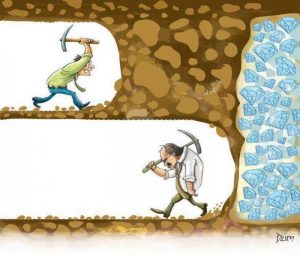Addario’s depiction of the British Consulate car bombing between pages 210 and 211 elicits feelings of alarm and apprehension. This image conveyed the horror that is strongly associated with domestic acts of terrorism; this form of violence is nightmarish, vile, and inhumane. I feel that Addario’s photograph emphasizes the vulnerability of all civilians in a state of war. As a result, this picture evoked anxiety and augmented the horrifying reality that terrorism can inflict pain on anyone—at any time—in the developing world. The photo prompted an unsettled, angered response from me: the debris of the pictured explosion is heartbreaking to view. Addario’s use of landscape orientation accentuates the sheer mass of the bombing; terrorism is ever-widening, reckless, and highly mobile in world civilizations.

Similarly, the image of the bandaged, hospitalized boy between pages 210 and 211 underscores the loss of innocence that is intimately prompted by war. The boy’s scars are agonizing to view; his pain resonates through the photograph and—quite frankly—touched my heart. It’s upsetting to see the aftermaths of war in the face of a child who has little to do with the political and social circumstances surrounding the violence in the Middle East. Indeed, innocent lives are lost during the battle for social justice; these casualties are heartbreaking and distressing. The emotional appeals of this photograph struck a poignant chord in my heart: the boy’s teary eyes elicit feelings of misery and anguish.
In my technology blog, I hope to incorporate multimedia in order to construct visual depictions of the innovations discussed in each post. Oftentimes, the ideas of entrepreneurs are intangible and difficult to clearly perceive; images and videos will reinforce leaders’ efforts to change the contemporary tech world and solidify their extraordinary ideas. I hope to take advantage of the blogging platform’s ability to display visual graphics by utilizing diagrams to explain emerging technological concepts and ideas; in my artificial intelligence post, for example, I employed concept art to effectively emphasize the potential of AI in hospital environments. The images and videos that I choose to implement in my blog will strengthen entrepreneurs’ lofty goals and ambitions and close the technological gap between dreams and reality.







